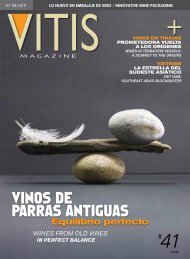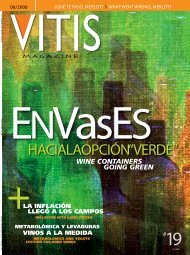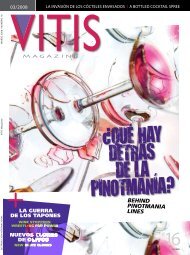Create successful ePaper yourself
Turn your PDF publications into a flip-book with our unique Google optimized e-Paper software.
inmigrantes<br />
europeos le<br />
cambiaron el<br />
rostro a estas<br />
“desdeñadas”<br />
tierras.<br />
contenido en sus terrazas de caudal permanente, de modo que el archipiélago<br />
fue desvaneciéndose dejando a la vista vastos terrenos del<br />
antiguo “vado de Lonquén” (españolización de la palabra mapuche llonca,<br />
que significa “paso”) convertidos en infecundos predios repletos de<br />
rodados.<br />
inFLuenCia euRopea<br />
no fue sino hasta comienzos del siglo pasado que la historia de lo que<br />
hoy conocemos como isla de Maipo tomaría un giro radical. en virtud<br />
de las enormes y negativas consecuencias que tuvieron las guerras mundiales,<br />
la gran Depresión (1929/30) y la guerra Civil española (1936/39),<br />
este tranquilo lugar vería llegar una gran cantidad de familias europeas<br />
a la zona, entre los que se cuentan inmigrantes españoles, italianos,<br />
franceses, alemanes y suizos. Muchos de ellos adquirieron precisamente<br />
estos terrenos, desdeñados por los vecinos “ilustres” y con esfuerzo y<br />
tenacidad fueron transformándolos en terrenos aptos para la agricultura,<br />
bajo la mirada incrédula de los llamados isleños. se dieron a la<br />
With patience and skills, they channeled the brooks that<br />
were left as a testimony of the old river, allowing for<br />
a fertile soil layer to settle over the brownfields. With<br />
some difficulties, among them the major river level rises<br />
in 1945 and 1981 that took away entire vineyards, like<br />
la Gloria and la Merced, respectively, and under the<br />
complex situation arisen during the implementation<br />
of the Agrarian reform project driven by eduardo<br />
Frei Montalva’s administration, the truth is that the<br />
development of this part of the valley has not stopped.<br />
And although vineyards have been present in that<br />
area since colonial times, the first wineries, like el<br />
rosario, santa inés, santa ema, el Peral, la Quinta,<br />
las Mercedes, Caperana, lourdes, Zavala, las Pircas,<br />
Piamonte, la Alquería, Aliste and Miraflores, appeared<br />
during the 1920s-1930a and they positioned isla de<br />
Maipo as one of the major winegrowing areas within<br />
the country.<br />
the most famous, tarapacá ex Zavala, dates back to<br />
late 19th century. As of 1874, it was known as viña de<br />
rojas, name given by its founder, Francisco de rojas y<br />
salamanca, a well-known and respected entrepreneur at<br />
that time, who imported French fine varieties. in early<br />
20th century, the winery was purchased by Antonio<br />
Zavala and renamed viña Zavala, a name that did not<br />
last very long, and during the 1930s the winery was<br />
named viña tarapacá ex Zavala, after Arturo Alessandri<br />
Palma, león de tarapacá, close friend and attorney of<br />
the Zavala family. in 1992, the company was acquired<br />
by Compañía Chilena de Fósforos, a large agroindustrial






